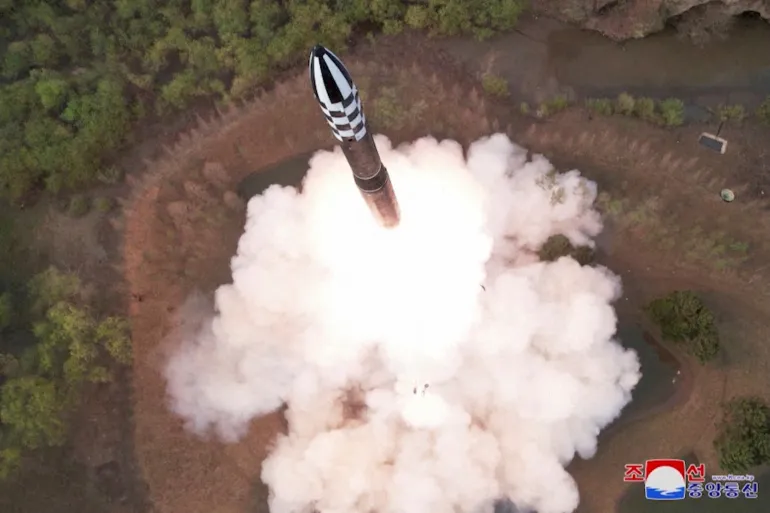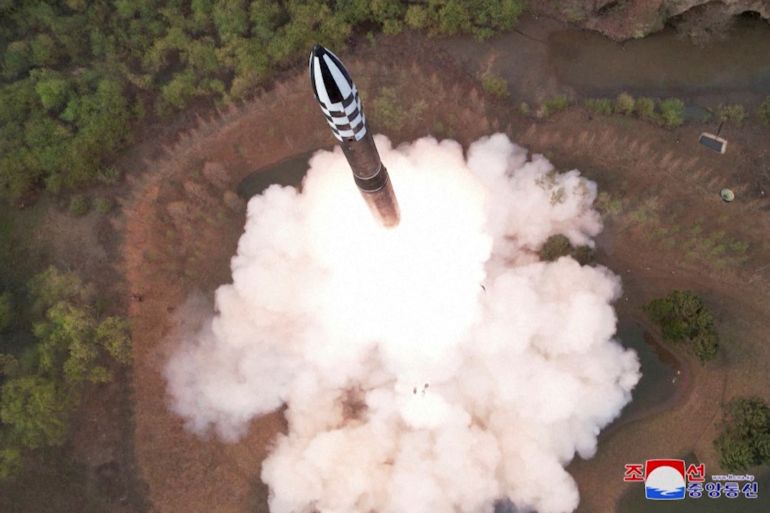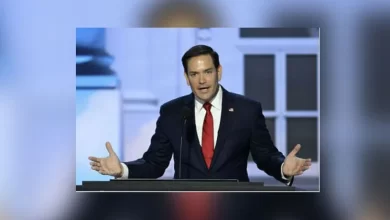North Korea tests first ever solid fuel ICBM, Hwasong-18

A longer-range solid-fuel ICBM has long been on leader Kim Jong Un’s weapons wish list.

North Korea has announced the successful test of its first solid-fuel intercontinental ballistic missile (ICBM), a key goal of leader Kim Jong Un’s plan to develop more advanced and powerful weaponry.
The test was detected on Thursday by South Korea and Japan, which briefly ordered residents on its northern island of Hokkaido to evacuate.
North Korean state media confirmed the launch of the missile, dubbed the Hwasong-18, on Friday morning.
The event was supervised by Kim, who was accompanied by his wife, young daughter and powerful sister Kim Yo Jong.
“A new type of intercontinental ballistic missile was test fired on Thursday as the key means of strategic military force,” the official Korean Central News Agency (KCNA) said, describing the test as a “miraculous success”.
The news agency cited Kim as saying the Hwasong-18 would rapidly advance North Korea’s nuclear response posture and further support an aggressive military strategy that promises to maintain “nuke for nuke and an all-out confrontation for an all-out confrontation” against its rivals.
“The Hwasong-18 weapons system to be run by the country’s strategic forces would play its mission and role to defend (North Korea), deter invasions and preserve the country’s safety as its most powerful method,” KCNA said.
Solid fuel missiles are safer to use, easier to manoeuvre and faster to deploy than liquid-propelled variants, which need to be loaded at the launch site and were a key part of a five-year arms development plan Kim unveiled in 2021.

Despite a United Nations ban on ballistic missile testing, North Korea has carried out numerous launches in recent years as it looks to advance its military prowess.
Last year, it tested a record number of weapons, including a high-thrust solid-fuel engine, and in February displayed what looked to be a new ICBM at a lavish night-time parade in Pyongyang.
“This is a significant breakthrough for the North Koreans, but not an unexpected one,” said Ankit Panda, an expert with the Carnegie Endowment for International Peace.
“Because these missiles are fuelled at the time of manufacture and are thus ready to use as needed, they will be much more rapidly useable in a crisis or conflict, depriving South Korea and the United States of valuable time that could be useful to preemptively hunt and destroy such missiles.”
North Korea has pointed to large-scale military exercises between South Korea and the United States to justify its latest spate of tests, claiming such drills are rehearsals for invasion.
Washington and Seoul say their drills are defensive in nature and a result of North Korea’s growing nuclear and missile threats.
The Hwasong-18 launch comes two days before the country commemorates the birth of founder Kim Il Sung, one of North Korea’s most important holidays.
Leif-Eric Easley, a professor at Ewha University in Seoul, said the days of North Korea disguising ICBM activity as satellite launches were long-gone and that Kim’s “blatant violations” of UN Security Council resolutions showed that his goal was to “make North Korea a full-fledged nuclear power and demand concessions from other countries”.
Denuclearisation talks have been stalled since 2019 when a high-profile summit between Kim and then-US President Donald Trump collapsed.
The Hwasong-18, which KCNA described as a three-stage missile, was fired from near Pyongyang and flew for about 1,000km (621 miles) before falling into waters east of North Korea.
Seoul is closely analysing the launch but officials said they believed the launch was an early test and that developing the Hwasong-18 properly “would need additional time and effort”.
That view was echoed by some analysts.
The missile is probably “be some way from credible deployment in any meaningful numbers”, said Joseph Dempsey, a defence researcher at the International Institute for Strategic Studies.
North Korea has fired about 30 missiles this year alone across 12 different launch events.
Kim has also ordered his military to intensify drills to prepare for a “real war“.







